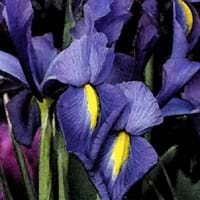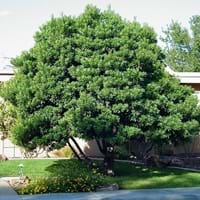Life Span
Perennial
Perennial
Type
Herbaceous Perennial
Tree
Origin
Hybrid origin
China, Japan
Types
Not Available
it is a type of blueberry
Habitat
meadows, Riverbanks, Rocky Mountains
Not Applicable
USDA Hardiness Zone
5-9
9-11
Sunset Zone
2b, 3a, 3b, 4, 5, 6, 7, 8, 9, 10, 11, 12, 13, 14, 15, 16, 17, 18, 19, 20, 21, 22, 23, 24
H1, 8, 9, 14, 15, 16, 17, 18, 19, 20, 21, 22, 23, 24
Habit
Clump-Forming
Upright/Erect
Flower Color
White, Yellow, Blue, Purple, Orange, Pink, Rose, Coral, Peach, Burgundy, Lavender, Plum, Orange Red, Dark Salmon, Bronze, Chocolate, Black
White
Flower Color Modifier
Bicolor
Bicolor
Fruit Color
Not Available
Dark Blue, Black
Leaf Color in Spring
Green, Light Green, Gray Green
Green, Dark Green, Bronze, Orange Red
Leaf Color in Summer
Yellow green
Dark Green
Leaf Color in Fall
Not Available
Dark Green
Leaf Color in Winter
Light Green
Red, Dark Green
Leaf Shape
Sword-like
Crescent-shaped
Plant Season
Spring
Spring, Summer, Fall
Sunlight
Full Sun, Partial Sun
Full Sun, Partial Sun
Type of Soil
Clay, Loam, Sand
Loam, Sand
The pH of Soil
Acidic, Neutral, Alkaline
Acidic, Neutral
Soil Drainage
Well drained
Average
Bloom Time
Early Spring, Spring, Late Spring
Late Spring, Early Summer
Tolerances
Drought
Not Available
Where to Plant?
Ground
Ground
How to Plant?
Root Plants
Rooted stem cutting, Seedlings
Plant Maintenance
Medium
Low
Watering Requirements
Average Water Needs
Requires watering in the growing season, Water when soil is dry
In Summer
Lots of watering
Lots of watering
In Spring
Moderate
Moderate
In Winter
Average Water
Ample Water
Soil pH
Acidic, Neutral, Alkaline
Acidic, Neutral
Soil Type
Clay, Loam, Sand
Loam, Sand
Soil Drainage Capacity
Well drained
Average
Sun Exposure
Full Sun, Partial Sun
Full Sun, Partial Sun
Pruning
Remove damaged leaves, Remove dead branches, Remove dead leaves
Prune in winter, Prune when young, Remove branches, Remove short twigs
Fertilizers
All-Purpose Liquid Fertilizer
All-Purpose Liquid Fertilizer, Fertilize in early spring, Mulch
Pests and Diseases
Bacteria, fungus, Viruses
Black Silt, Leaf rust, Sooty Mold
Plant Tolerance
Drought
Not Available
Flower Petal Number
Single
Single
Foliage Texture
Fine
Medium
Foliage Sheen
Matte
Glossy
Attracts
Butterflies, Hummingbirds
Birds
Allergy
Not Available
Not Available
Aesthetic Uses
Beautification, Showy Purposes
Bonsai, Showy Purposes
Beauty Benefits
Not Available
For treating wrinkles, Skin Problems
Environmental Uses
Air purification
Air purification, Shadow Tree
Medicinal Uses
Not Available
Bone strength, Cancer, Diabetes, Digestion problems, Heart problems, High blood pressure, Improving mental health, Vitamin C, Weight loss
Part of Plant Used
Flowers, Root
Fruits
Other Uses
Basketary, Used for fragrance
Edible syrup, Employed in herbal medicine, Used As Food, Used as Ornamental plant
Used As Indoor Plant
No
No
Used As Outdoor Plant
Yes
Yes
Garden Design
Cutflower, Foundation, Mixed Border, Rock Garden, Wall
Hedges, Screening / Wind Break, Shade Trees, Street Trees
Botanical Name
IRIS 'Apollo'
ELAEOCARPUS decipiens
Common Name
Carmen Iris, Dutch Iris
Japanese Blueberry
In Hindi
Dutch Iris
जापानी ब्लूबेरी
In German
Dutch Iris
japanische Blaubeere
In French
Dutch Iris
bleuet japonais
In Spanish
Dutch Iris
arándanos japonés
In Greek
Dutch Iris
ιαπωνική βατόμουρου
In Portuguese
Dutch Iris
blueberry japonês
In Polish
Dutch Iris
Japoński borówki
In Latin
Dutch Iris
Vaccinium Italica
Phylum
Magnoliophyta
Not Available
Class
Magnoliopsida
Not Available
Order
Asparagales
Oxalidales
Family
Iridaceae
Elaeocarpaceae
Clade
Angiosperms, Monocots
Angiosperms, Eudicots, Rosids
Tribe
Irideae
Not Available
Subfamily
Iridoideae
Not Available
Season and Care of Dutch Iris and Japanese Blueberry
Season and care of Dutch Iris and Japanese Blueberry is important to know. While considering everything about Dutch Iris and Japanese Blueberry Care, growing season is an essential factor. Dutch Iris season is Spring and Japanese Blueberry season is Spring. The type of soil for Dutch Iris is Clay, Loam, Sand and for Japanese Blueberry is Loam, Sand while the PH of soil for Dutch Iris is Acidic, Neutral, Alkaline and for Japanese Blueberry is Acidic, Neutral.
Dutch Iris and Japanese Blueberry Physical Information
Dutch Iris and Japanese Blueberry physical information is very important for comparison. Dutch Iris height is 25.40 cm and width 12.70 cm whereas Japanese Blueberry height is 910.00 cm and width 610.00 cm. The color specification of Dutch Iris and Japanese Blueberry are as follows:
Dutch Iris flower color: White, Yellow, Blue, Purple, Orange, Pink, Rose, Coral, Peach, Burgundy, Lavender, Plum, Orange Red, Dark Salmon, Bronze, Chocolate and Black
Dutch Iris leaf color: Green, Light Green and Gray Green
Japanese Blueberry flower color: White
- Japanese Blueberry leaf color: Green, Dark Green, Bronze and Orange Red
Care of Dutch Iris and Japanese Blueberry
Care of Dutch Iris and Japanese Blueberry include pruning, fertilizers, watering etc. Dutch Iris pruning is done Remove damaged leaves, Remove dead branches and Remove dead leaves and Japanese Blueberry pruning is done Prune in winter, Prune when young, Remove branches and Remove short twigs. In summer Dutch Iris needs Lots of watering and in winter, it needs Average Water. Whereas, in summer Japanese Blueberry needs Lots of watering and in winter, it needs Ample Water.





